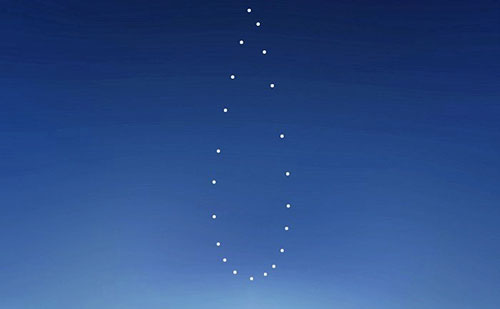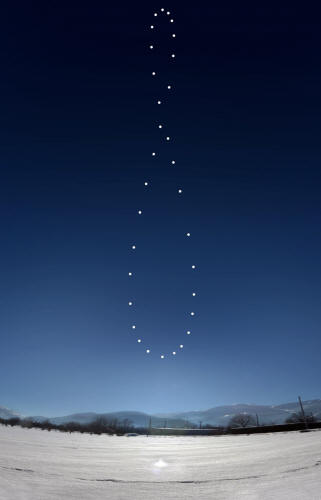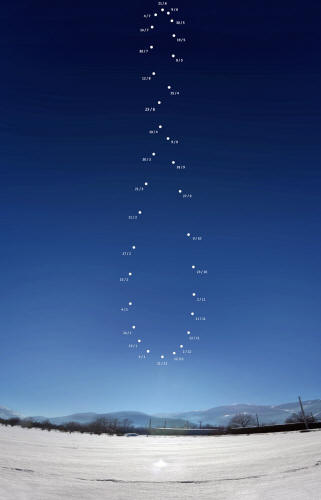|
from
UniverseToday Website
taken at the same time and place over the course of 2015, as seen from Sulmona, Abruzzo, Italy.
Credit and copyright:
Giuseppe Petricca.
A very fine image, compiled by astrophotographer Giuseppe Petricca from Italy, proves the answer is no.
This pattern is called
an analemma, the full version shown
below:
A compilation of images of the Sun taken at the same time and place over the course of 2015, as seen from Sulmona, Abruzzo, Italy.
Credit and copyright:
Giuseppe Petricca.
Astrophotographers need to dedicate an
entire year to the project. It requires diligence to take images 30
to 50 times throughout the year at the same time of day and same
location.
Also, analemmas on the other planets have different shapes.
Here's one created by the
Opportunity rover (about the
Martian analemma):
The Opportunity rover captured this analemma showing the Sun's movements over one Martian year. Images taken every third sol (Martian day) between July, 16, 2006 and June 2, 2008.
Credit:
NASA/JPL/Cornell/ASU/TAMU
But then, we also wouldn't have seasonal change, so I vote to keep axial tilt!
annotated with the dates each picture of the Sun was taken. Each image of the Sun was taken at the same time and place over the course of 2015, as seen from Sulmona, Abruzzo, Italy.
Credit and copyright:
Giuseppe Petricca.
Petricca used a Nikon Coolpix P90 Bridge Camera mounted on a fixed tripod, with images taken from a field nearby his home Sulmona, Abruzzo, Central Italy.
Our David Dickinson has written a
great piece
explaining the dynamics and
history of analemmas, with instructions on how you can compile
your own.
|





